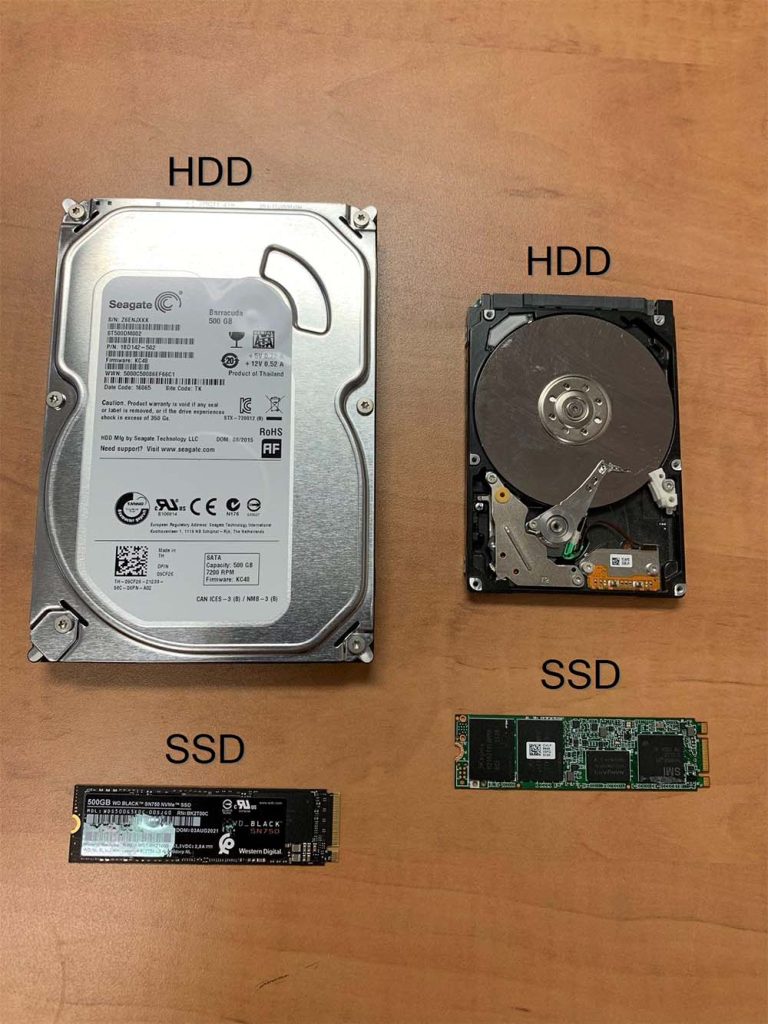By Steven Klinck
Are you buying a new computer? Upgrading to the newest iPhone or Android device? Or maybe you just have an obsolete device collecting dust somewhere in your home. You may be asking yourself, “How do I safely dispose of these items and do so without compromising my digital security?”.
Electronic waste (e-waste) is considered a hazardous material. This is because electronics can leak toxic elements like mercury and lead over time, which can be harmful to the environment and to our community. At the bottom of this article, you’ll find a list of locations in Muskoka where you can get rid of your e-waste for free! But first, let’s talk about ensuring that the electronics you’re discarding won’t be putting your digital security at risk.
The first thing you want to ask yourself when preparing to discard electronics is, “Does this device store any personal or professional data?”. If the answer is “yes”, you want to make sure that your data is inaccessible. Below I’ll outline a few common devices and how to ensure your personal information is safe.
Computers:
Almost all computers house a component called a hard drive. Below is an image of various hard drive form factors. Your computer almost certainly contains one (or more) of the below. I think it goes without saying that you should backup or export any data you want to keep from your old computer before moving forward with recycling your device. That said, to ensure your data security, it is essential to remove and destroy (or keep) your hard drive before recycling your computer. Although there are numerous form factors, there are two main types of hard drive, HDDs and SSDs. HDD stands for “hard disk drive” and contain a spinning disk called a platter which stores all your data (like a thick CD/DVD). SSD stands for “solid state drive”, these components do not contain any moving parts (like a typical USB drive).

To effectively destroy an HDD you’ll want to remove the drive from the computer and critically damage the internal disk. There are a few ways to do this on your own:
- Repeatedly (if necessary) drop the HDD on a hard surface until the internal disk shatters. You’ll know you were successful if it sounds like there is sand inside the drive when you shake it. (1)
- Drill holes into the hard drive. (1)
- Smash the hard drive with a hammer. Again, you’ll know you were successful if it sounds like there is sand inside the drive when you shake it. (1)
- Or keep the drive in a safe location if you’d like to retain the data from your old computer.
(1) Please take all safety precautions when destroying your hard drive, such as wearing eye protection, gloves, and doing so in a safe location in case the drive shell opens and spills out glass shards from the ruined disk.
For SSDs the process for destroying them is like an HDD. However, since there is no disk inside to shatter, you’ll want to thoroughly destroy the drive to ensure that the all the computer chips on the surface of the SSD are damaged.
Phones & Tablets:
Disposing of phones and tablets isn’t as easy as smashing the internal memory, as in most cases the memory is non-removable, and its too dangerous to destroy these devices, as rupturing the battery could result in a fire and/or leak hazardous waste which will have environmental consequences. Below are the best practice steps to dispose of an old smartphone or tablet:
- Remove any SIM cards and removable storage such as SD cards.
- Remove all your accounts from the device, most of the time this can be done from the phones/tablet’s “settings” app. (2)
- Perform a “factory reset” of the device, which wipes all the data from the memory and returns the phone/tablet to the state it was in when it left the factory. (2)
- At this point you have a few options:
- Give the phone/tablet away to a relative or friend
- Sell the phone/tablet
- Bring the phone/tablet to an e-waste recycler
(2) Every phone is a little different so you may need to do a Google search to find out how to do this on your device, as the various methods won’t be covered in this blog post.
Other Electronics:
For any electronic devices that do not have internal memory and thus do not store personal information, you can simply discard them anywhere e-waste is accepted. Some examples of these are:
- Power cords and charging cables
- Batteries
- TVs and PC monitors (3)
- Computer mice and keyboards
- Printer cartridges
- Printers and landline phones (4)
(3) Some smart TVs store personal information such as Netflix accounts. Be sure to sign out of these accounts before discarding the device.
(4) Some printers and landline phones have address books which should be purged prior to recycling.
Free E-Waste Drop-off Locations in Muskoka:
- Bracebridge (1062 Rosewarne Drive) – Rosewarne Transfer Station
- Gravenhurst (1052 Beiers Road) – Beiers Road Transfer Station
- Huntsville (178 Stisted Landfill Road) – Stisted Transfer Station
- Muskoka Lakes (1174 Eveleigh Road) – Eveleigh Transfer Station
- Lake of Bays (1020 Oxtongue Rapids Road) – Franklin Transfer Station
- Georgian Bay (980 South Bay Road) – Baxter Transfer Station
- Almost all Staples stores accept e-waste free of charge as well
Find out more about e-waste drop-offs in Muskoka here.
